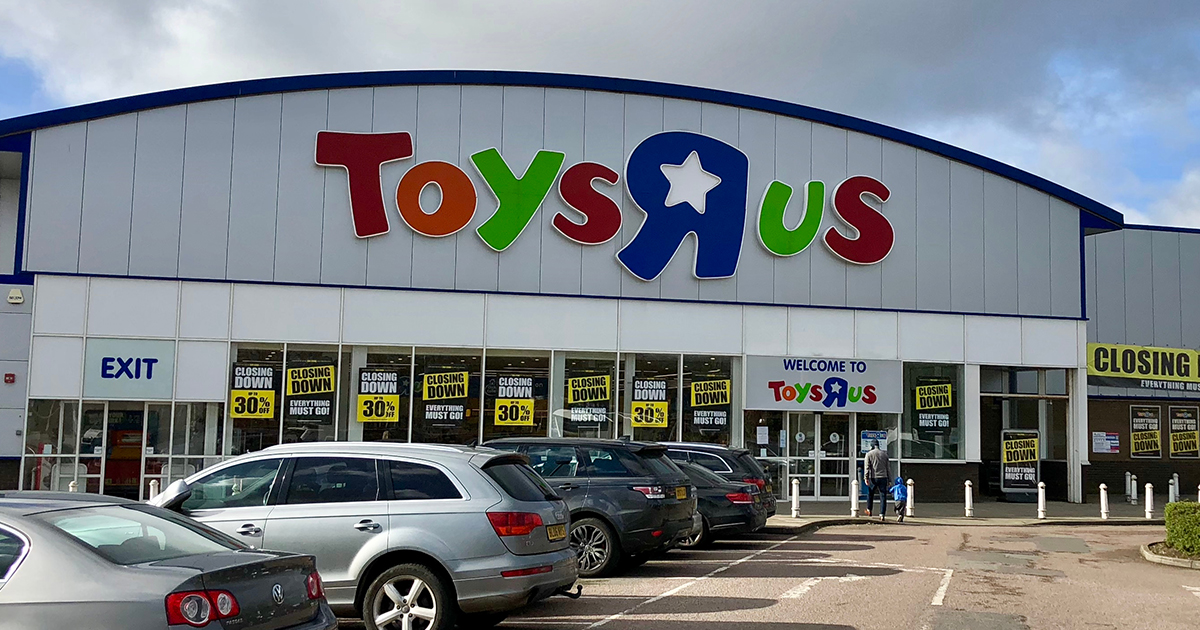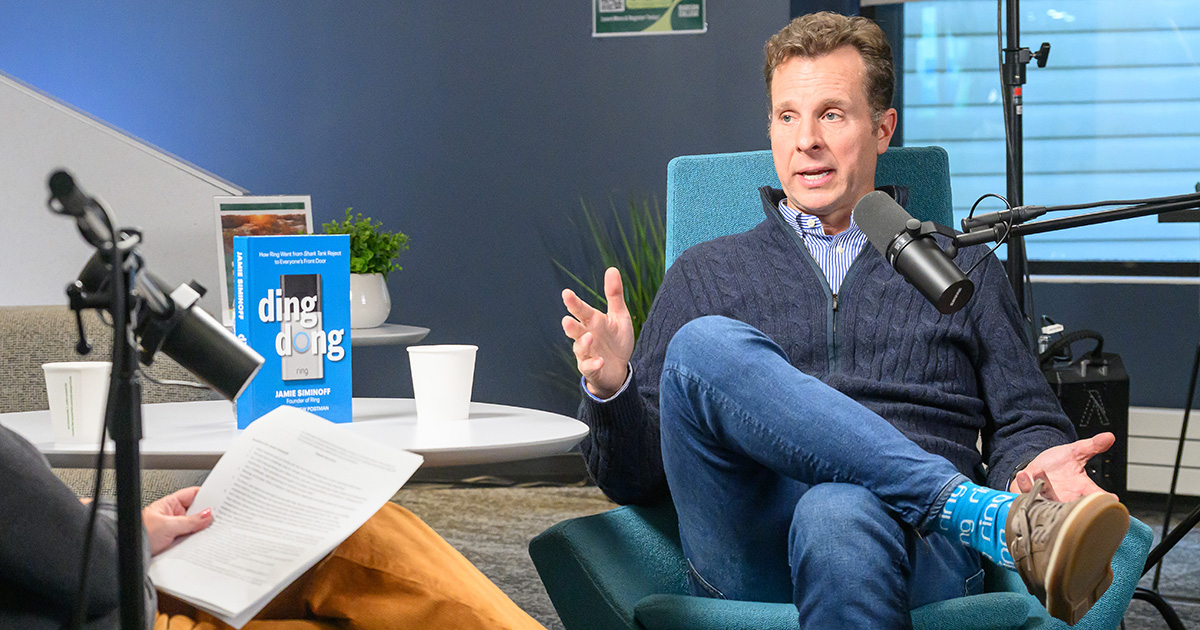I’m a Toys R Us Kid, But I’ve Grown Up!

The retail world seems bleak, as retailers Sears/Kmart, Bon Ton, Sam’s Club, Macy’s, Claire’s, Abercrombie & Fitch, and JC Penney have all announced huge store closings or bankruptcy. One closing that has truly tugged at my heartstrings is Toys R Us. For many, Toys R Us played a huge role in our childhood memories. I remember spending hours methodically scouring the holiday catalog to craft the perfect wish list. In its heyday, Toys R Us gave kids access to a seemingly boundless inventory of toys, games, and crafts that no other retailer was able to offer.
Toys R Us also was an important partner for many entrepreneurs. Unlike its competitors, Toys R Us often was willing to take a chance on an up-and-coming brand or a smaller supplier, showcasing their products to Toys R Us’ willing and eager audience. With its closing, toymakers have lost an important platform for new product discovery. When the flagship store in Times Square closed in 2015, many consumers felt a pang of nostalgia or regret at never having visited the magical toy wonderland. Now that Toys R Us is shuttering all of its stores, many of us are left wondering if this is the end of an era, and if this new world of retailing is something that we are prepared for. The answer to both questions is a resounding yes! Yes: this is the end of an era, and yes: this new world of retailing is something that we are prepared for since it is dictated by the demands and needs of the consumer.
What Went Wrong?
While Toys R Us provided many of us with a magical childhood experience, the company failed to adapt to the needs of 21st century families and the 21st century economy. Since 2005, Toys R Us has been crippled by an incredible $5 billion in debt from its private equity backers. Its overwhelming annual debt payments made it nearly impossible for Toys R Us to update its stores or supply chain infrastructure, much less invest in innovation and growth. Beyond its finances, three red flags in Toys R Us’ business model contributed to its demise: the blame game; poor inventory and vendor management; and failure to create a unique customer experience.
The Blame Game
Toys R Us suggested that such behemoth retailers as Amazon, Walmart, and Target contributed to its demise by significantly cutting prices on toys during the holiday season, rendering Toys R Us unable to compete. In 2000, it signed a 10-year contract with Amazon to be the main supplier of toys through Amazon’s website. However, Amazon broke the tenets of the contract, suggesting that Toys R Us didn’t sell a big enough assortment of toys to be a viable partner. Toys R Us failed to compete as Amazon, Target, and Walmart threatened its market share with low prices and competitive advantages.
Sadly, Toys R Us didn’t have to play the blame game. Consider Kohl’s: it has shown that department stores can adapt and contend in this changing retail environment. Kohl’s has worked with its vendors to offer a more fast fashion model that competes with other discount retailers on both price and fashion.
Inventory and Vendor Management
Toys R Us had inventory management challenges for a long time. For example, it entered the online toy market in the late 1990s. The company’s disastrous 1999 holiday season left many children waking up to an IOU under the Christmas tree, as the toys parents had ordered never arrived. Today, Toys R Us’ aisles are stocked high: inventory is one of the company’s largest investments. However, consumers can’t find anything, and much of the inventory investment goes toward less popular toys.
In order to compete with such retailers as Walmart and Target, Toys R Us attempted to capitalize on the 11th-hour holiday shopper who had missed the discount store deals and was frantically trying to purchase last-minute gifts, regardless of higher price points. Going after last-minute shoppers wasn’t a sustainable strategy. Furthermore, vendors were skittish about sending Toys R Us new merchandise after the company announced bankruptcy in September 2017, leaving it with limited inventory during the critical holiday season.
In contrast to Toys R Us, Ross Stores prides itself on its strong partnerships with vendors. Because of these relationships, Ross is able to take advantage of opportunistic buys and work with vendors for unique inventory opportunities. Ross consistently provides its customers with a treasure hunt experience that cannot be replicated online.
Unique Customer Experience
As a child, going to Toys R Us was magical. As an adult, not so much. Several years ago, I went to Toys R Us at the holidays in search of a critical Paw Patrol toy that my daughter absolutely could not live without. The entire experience was miserable. It took more than 30 minutes to find the item I was looking for, and then another 40 minutes to check out. While I expected a reasonable wait at the holidays, waiting in line at a register with other frazzled parents for almost three-quarters of an hour radically decreases one’s holiday spirit. Toys R Us had lost its sparkle and magic. It wasn’t a fun experience anymore and had become what it predicted, a last-minute effort to get a toy at full price. Who wants to win that way?
Many retailers provide customers with unique in-store experiences that also facilitate the ease of purchase. Fashion brand Rebecca Minkoff uses smart mirrors in fitting rooms that allow customers to shop for complimentary products while they are trying on pieces in the store. Retailers such as Wayfair and The North Face use AI and virtual reality to lead customers effortlessly through their shopping journey and create unique experiences.
Lessons Learned from Toys R Us
Some doom and gloom experts say that Amazon is killing retail, and that Toys R Us is just one in a long list of casualties. Last century, we said the same thing about Walmart. Before that, everyone blamed Sears. Realistically, retail will never die because consumers will always need to buy things.
Retailers that want to compete today need to study the history of those that have gone before, and learn from their mistakes. In a world of boundless inventory online, don’t try to cram every possible item in your store. Make friends with your vendors, because these relationships can take you a long way. Toys R Us would have benefited from exclusive partnerships with vendors and could have avoided competing with other retailers on price. Most importantly, create a memorable experience for your customer. Consider competing on convenience, a quick and painless in-and-out shopping trip. Or, compete to fill your shoppers’ visit with magic, wonder, and discovery. Consumers want either convenience, or they want to be amazed and dazzled. Either way, retail success depends on meeting these needs.
Posted in Insights





